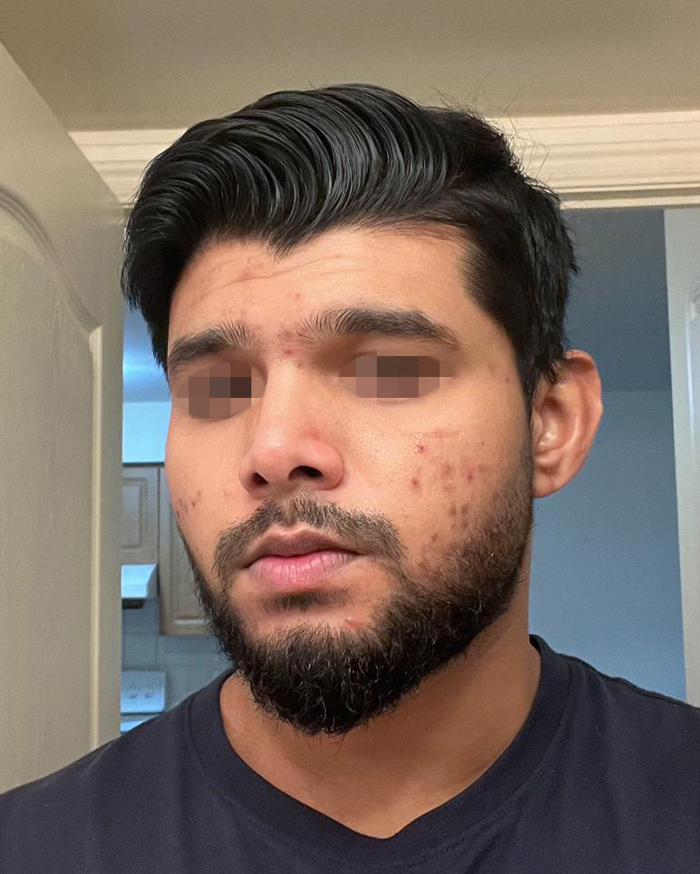Chemical Peels
Reveal Brighter, Smoother Skin
Chemical peels are a versatile and effective way to rejuvenate your skin, addressing concerns like acne, sun damage, fine lines, and uneven texture. By gently exfoliating the outer layers of skin, chemical peels reveal a fresher, more radiant complexion underneath.

Chemical Peels
What Is a Chemical Peel?
A chemical peel involves applying a specialized solution to the skin, which causes controlled exfoliation of the outer layers. This process removes damaged skin cells, stimulates cell turnover, and promotes the growth of new, healthier skin.
Depending on your skin concerns, we offer various types of peels, from superficial to medium-depth, each tailored to deliver specific results. The treatment helps to improve skin texture, tone, and clarity, revealing a smoother and more radiant complexion.
Benefits of Chemical Peels
Chemical peels offer a wide range of benefits for skin health and appearance:
Reduces fine lines and wrinkles
Improves acne and minimizes breakouts
Fades hyperpigmentation and sun spots
Smooths rough skin texture
Enhances skin radiance and clarity
Stimulates collagen production
Minimizes pore appearance
What to Expect
During the treatment, a chemical solution is applied to your skin, which may cause a mild tingling or stinging sensation. The duration of the peel depends on its type and your skin's response. After the peel, you may experience redness, dryness, and peeling, which varies in intensity and duration based on the peel's depth.
Results become visible as the skin heals, revealing a smoother, brighter, and more even-toned complexion. Multiple sessions may be recommended for optimal and long-lasting results.
Is It Right for You?
Chemical peels are ideal for individuals seeking to improve skin texture, reduce signs of aging, address acne, or correct hyperpigmentation. A personalized consultation will help determine the most suitable peel type and strength for your skin type and concerns.
Real Chemical Peel Results
See the transformative results our clients have achieved with Chemical Peel treatments.
Before

Before Treatment
After

Amazing Results
Acne & Blemish Treatment
3 sessions - Significant reduction in breakouts
*Results may vary. Individual results are not guaranteed.
Frequently Asked Questions
A chemical peel is a skin-resurfacing procedure in which a chemical solution is applied to the skin to remove the top layers. The skin that grows back after a chemical peel is smoother and younger looking. Chemical peels are used to treat wrinkles, skin discoloration and scars — mostly on the face.
The number of treatments depends on the type of peel and your skin concerns. Light peels can be done every 2-4 weeks for a series of 3-6. Medium peels may be done every 3-9 months. During your consultation, we will create a personalized treatment plan for you.
During the application of the chemical solution, you may experience a mild to moderate tingling, stinging, or warm sensation, which typically subsides within a few minutes. Deeper peels may cause more intense sensations, but discomfort is generally manageable.
Downtime varies depending on the depth of the peel. Light peels may result in mild redness and flaking for 1-3 days. Medium peels can cause redness, swelling, and peeling for 5-7 days. We will provide detailed aftercare instructions to ensure proper healing.
For light peels, you may notice immediate improvements in skin texture and brightness. For medium peels, results become more apparent as the peeling process completes, typically within 1-2 weeks, revealing smoother, more even-toned skin.
Chemical peels can be adapted for various skin types, but caution is advised for darker skin tones due to a higher risk of hyperpigmentation. A thorough consultation is crucial to determine the most suitable peel type and strength for your skin.
Yes, certain chemical peels, particularly those containing salicylic acid, are highly effective in treating acne by exfoliating the skin, unclogging pores, and reducing inflammation. They can also help improve the appearance of acne scars.
Avoid sun exposure, retinoids, and exfoliating treatments for at least one week prior. Inform your provider about any medications or skin conditions. A clean, makeup-free face is required on the day of treatment.
Temporary redness, swelling, and peeling are common. Less common side effects include prolonged redness, infection, or changes in pigmentation. Strict adherence to aftercare instructions and sun protection minimizes risks.
The longevity of results depends on the peel depth and your skincare routine. Light peels offer temporary improvements and require maintenance. Medium peels provide longer-lasting results, often maintained with good skincare and periodic touch-ups.